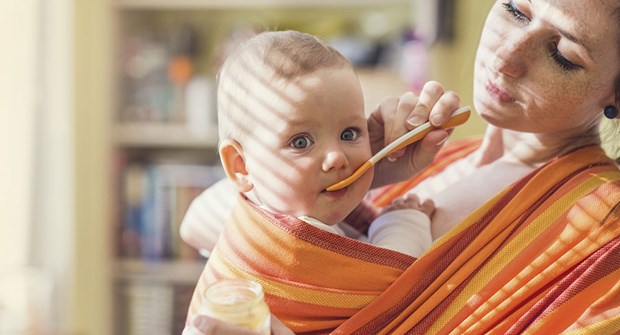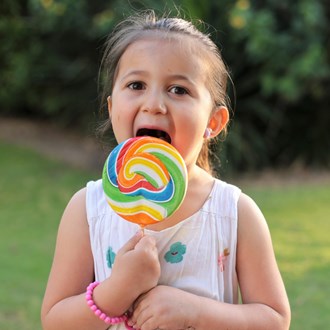The Benefits Of Babywearing

The pros and cons of this growing trend.
By Practical Parenting
November 15 2016
Wearing a baby in a sling or another form of carrier has been practiced around the world since the very early days. It was only when wheeled baby carriages, or strollers, were invented in America in the 1830s that it became less popular in the western world.
Then, in 1992, Dr William Sears coined the phrase ‘attachment parenting’ suggesting babies stay close to their carer at all times. This parenting strategy brought back the practice of babywearing to western countries and it continues to be a growing trend today.
Pros and cons of babywearing
Babies in close physical contact with their carer have been found to cry less, be calmer and reduce anxiety levels in nervous parents. Close physical contact can also increase bub’s immune levels, promote steady weight gain and reduce the likelihood of flat head syndrome.
As a parent, having your hands free is also a huge advantage of babywearing. Shopping, flights and transfers while on holidays, beach or bush walking, even vacuuming are a few activities that are easier when wearing, rather than holding your baby.
However, constantly carrying your little one around during the day may result in bub developing short napping habits, which some parents may find tricky. Babywearing may also produce poor self-settling patterns and increase night waking in some little ones because they need help to settle back to sleep.
How to 'wear' your baby
There are several ways to wear your baby. These can be on the front, back or hip either in the form of a sling, which goes over one shoulder or in a carrier, which goes over both shoulders.
Slings are made from a variety of materials and are secured with rings, buckles, ties or knots. Slings form a pouch that little ones lie in or older ones sit in. Carriers include fabric wraps, soft padded and framed varieties. Some designs have neck, back and hip-to-knee support, which are suitable for newborns. Other carriers are better suited to older babies that can weight-bare and sit unsupported. Whatever method you choose, your child can be worn for as long as it is mutually enjoyable and safe.
The right choice
It’s important to choose a sling or carrier carefully. It needs to be comfortable for you to wear and suitable and safe for your child’s age and weight. It’s also important for you to be able to put the device on yourself and to be able to place your baby safely inside. Make sure not to swaddle her before putting her in a sling or carrier as she can overheat. Carefully consider carriers that position your bub facing outward, as a little one in this position is unable to rest her head when she is tired, escape from overstimulation, and her hips are pinned in a difficult position for normal development.
Like any skill, babywearing takes practice and time to feel comfortable.
Occasional wear
If babywearing is not something you want to practice constantly it can be done intermittently. This is especially handy if your bub is unsettled and won’t sleep in a cot or stroller, or you have other children who need your attention.
Intermittent babywearing can be beneficial in two ways. It includes close contact and reduces crying when needed and bub gains neurological and muscle development along with independence by spending time on the floor rather than always being carried. Babywearing is also great for dads or other carers who may have limited time with bub, as close physical contact can produce quicker bonding.
Babywearing like co-sleeping is a personal choice and it’s important to remember that whatever method of caring for your baby you choose it doesn’t make you a ‘good’ or ‘bad’ parent – it’s what works for you and your baby that’s important.






